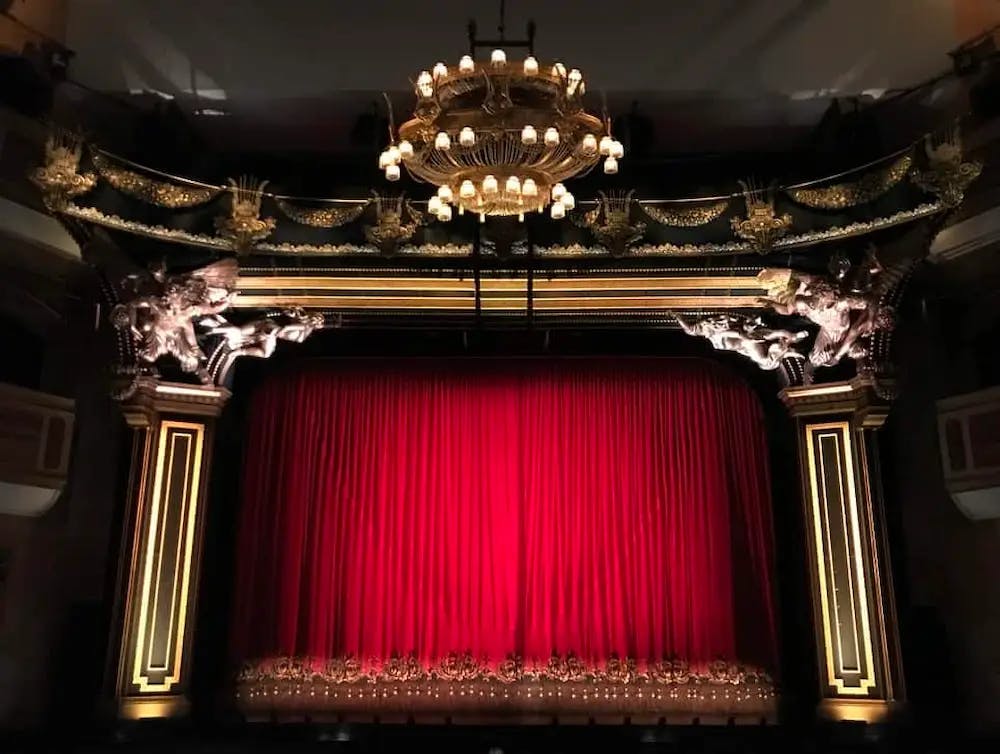The 38 Best Historical Places To Visit in the UK
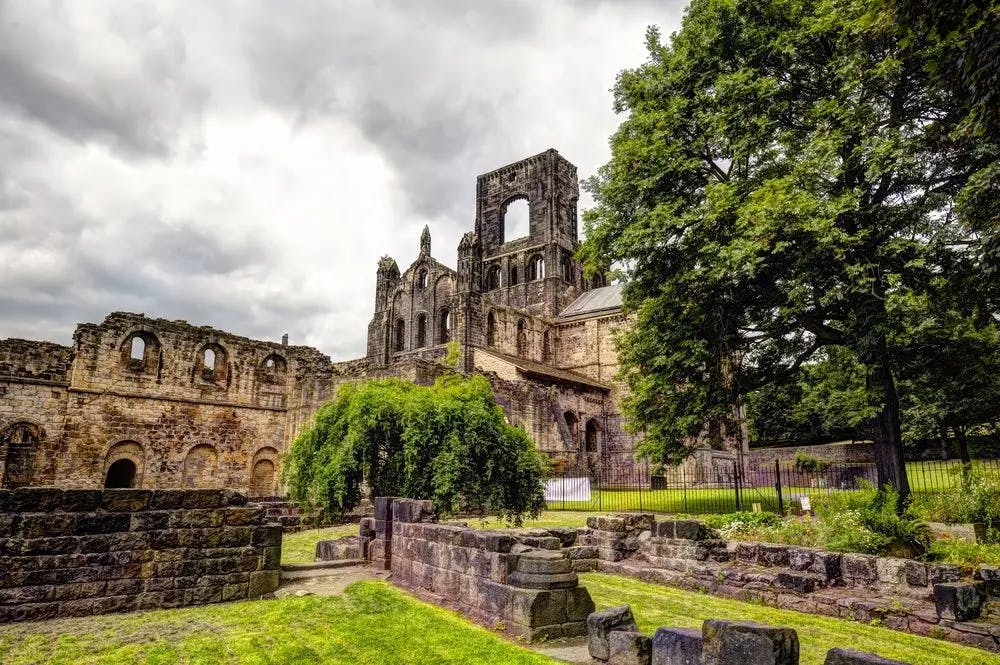
Estimated Reading Time: 14 minutes
From staggering cathedrals and other feats of architecture to pop-culture references and world-famous pubs, we’ve researched the best historical places to visit throughout the UK. Many of these places are must-see attractions for the whole family and people of all ages.
Spend time with a friendly carer in your home
Browse the best companionship care in your area.
Find historical places to explore throughout the UK:
- Belfast
- Birmingham
- Brighton and Hove
- Bristol
- Cardiff
- Chester
- Edinburgh
- Glasgow
- Leeds
- Leicester
- Liverpool
- London
- Manchester
- Newcastle-upon-Tyne
- Nottingham
- Sheffield
- Southampton
- Swansea
Historical Places to Visit in the UK
Below, we’ve listed 38 of the best historical places to visit in the UK. These historical places can be found in some of the country’s largest and most popular cities. Use the navigation links above to find a historically significant site near you!
Belfast
Belfast Castle
Around 120 metres above sea level, Belfast Castle provides stunning views stretching across the city. This castle was officially re-opened to the public in November 1988, having been originally built by the Normans during the 12th century.
Over the next several hundred years, Belfast Castle underwent multiple changes and sackings. As a result, this castle is packed with history you can learn all about at the visitor centre.
Shankill Road
The Shankill Road became famous during The Troubles (from the late 1960s to 1998). During this period, Shankill Road saw plenty of sectarian violence between Catholics and Protestants.
Conflict no longer dominates this fascinating road, and today the area serves as a popular destination for curious tourists. Here, you can check out colourful murals and peace walls. This history is perhaps best experienced through one of the city’s famous Black Cab tours.
Birmingham
Cadbury World
Located just south of the city centre in the West Midlands, Cadbury World is one of Birmingham’s must-see historical places. As the name suggests, this museum details the famous Cadbury family who is known all over the world for creating some truly delicious chocolate. This family started small in 1824, with just a single shop selling chocolate drinks and cocoa.
Warwick Castle
Conveniently located between Royal Leamington Spa and Warwick, Warwick Castle has a huge amount of significant British history attached to it. This castle was built by a king and was a crucial stronghold during the War of the Roses and the English Civil War
Not only that, but Warwick Castle is also one of the UK’s most impressive Mediaeval castles - and it’s been continuously inhabited since the Middle Ages! Special events and guided tours are regularly held here.

Brighton and Hove
Duke of York’s Picturehouse
The Duke of York’s Picturehouse is the oldest built-for-purpose cinema in the UK that still operates! Over 100 years old, this Brighton and Hove cinema still retains many of its vintage Edwardian features.
Sea Life Centre
Originally called the Brighton Aquarium when it first opened all the way back in 1872, the Sea Life Centre isn’t just the United Kingdom’s oldest aquarium, but also the oldest in the world.
Since opening, a huge amount has taken place here. During the 1950s and 1960s, the aquarium contained a music venue called The Florida. Among other musicians, The Who played a weekly Wednesday night show that cost the equivalent of just 15p!
Bristol
Brunel’s SS Great Britain
Often regarded as Bristol’s best historical place, Brunel’s SS Great Britain is a superb steamship with numerous rooms that can be explored by history lovers. These include the old ship’s galley, dining salon and surgeon’s quarters.
Clifton Suspension Bridge
Much of Bristol’s history can be traced back to Isambard Kingdom Brunel - a world-famous engineer who was known for his pioneering work during the Industrial Revolution. The 76-metre-high Clifton Suspension Bridge was designed by Brunel and is undoubtedly one of Bristol’s most famous landmarks.

Cardiff
Castell Coch
Wales is packed with castles. Over 600 in fact - 427 of which are still standing! One of the most interesting is Castell Coch (Red Castle). This Victorian castle was built on top of 13th-century ruins and can be found in the north of Cardiff.
Welsh National War Memorial
You’ll find the Welsh National War Memorial in Cardiff’s Alexandra Gardens. This memorial was completed in 1928 and serves as a vital memory to those who fought and died during World War One. Later down the line, a commemorative plaque was added to remember those who died during World War Two.
Chester
Chester City Walls
The city walls spanning Chester are the longest and most complete in Britain. They’re the oldest as well, with some sections having been built almost 2,000 years ago. When walking the walls, you’ll also be able to learn more about Chester’s long and storied history.

Chester Cathedral
A Mediaeval building in Chester that’s absolutely worth checking out is the Chester Cathedral. This must-see historic attraction is a vibrant community of worship, an ancient abbey and an architectural marvel - all rolled into one. As a result, thousands of people visit this Cheshire cathedral every single year.
We can help you find the best companionship care for you or your loved one. Request a free list of home care agencies, and our care experts will match you with suitable companionship carers with availability in your local area.
Edinburgh
Palace of Holyroodhouse
The official residence of the British monarch in Scotland, the Palace of Holyroodhouse stands majestically at the end of Edinburgh’s historic Royal Mile. This palace is perhaps best known as the home of Mary, Queen of Scots.
On a tour of the Palace of Holyroodhouse, there are 14 unique apartments to explore, along with the impressive ruins of the 12th-century Holyrood Abbey. The grounds also contain idyllic royal gardens.
Edinburgh Castle
One of Western Europe’s most exciting and captivating historic sites, Edinburgh Castle is also one of the continent’s oldest fortified buildings. Over the years, this castle has served as a royal residence, military garrison, prison and fortress. When visiting, you’ll learn all about these fascinating aspects of the castle’s history.
Many people hike up to Edinburgh Castle for the stunning views alone, with its high position offering panoramic sights stretching across the Scottish capital of Edinburgh.
Glasgow
The Necropolis
The beautiful 37-acre Necropolis cemetery is full of amazing architecture, sculptures and fascinating stories surrounding the 50,000 people commemorated here. This Victorian cemetery is located in the heart of Glasgow and attracts visitors from all over the world.
Guided walking tours are available for those who would like to learn more.

Glasgow Cathedral
Built between 1136 and 1484, Glasgow Cathedral is now the largest place of worship in Scotland. One of the most popular things to do here is venture into the crypt built in the mid-13th century that houses the tomb of St Mungo. It was around this shrine that much of Glasgow sprang up - helping to shape this popular city into the one it’s known as today.
Regular services take place and there’s no admission fee, though contributing to the upkeep of the building is encouraged. Tours lasting around an hour are also available.
Leeds
Kirkstall Abbey
Dating back to 1152, Kirkstall Abbey is one of the most historically significant places in Leeds. Despite being almost 900 years old, the ruins are still largely intact and are a brilliant place to take photos.
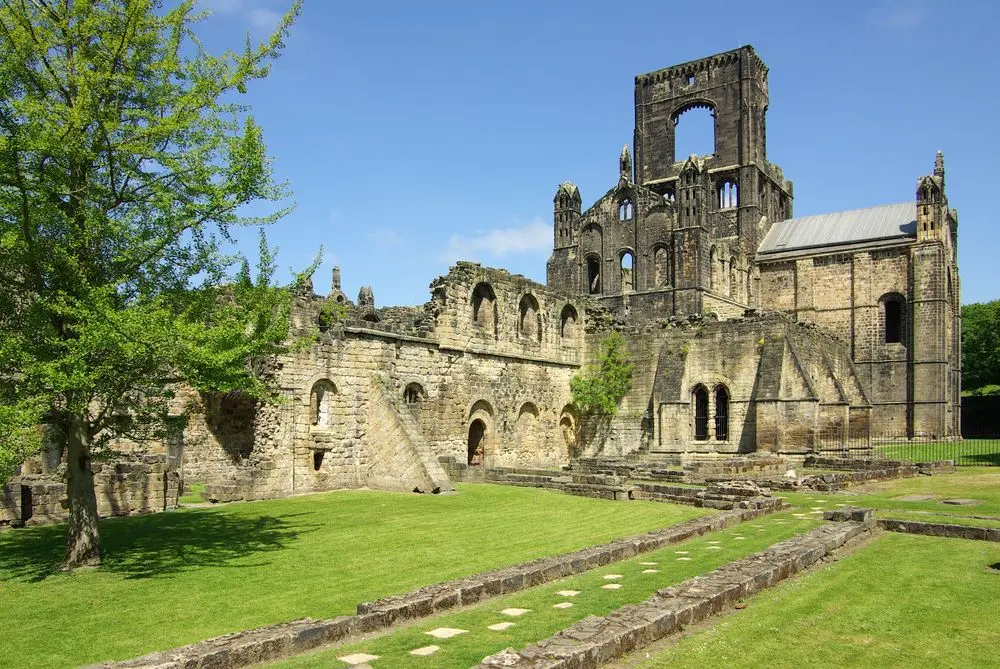
Thornton’s Arcade
The oldest arcade in Leeds (an arcade being a covered passage with arches along one or both sides), Thornton’s Arcade was first built in 1878 by Charles Thornton. Leeds is well known for its arcades dotted around the city centre and this is definitely one of the most interesting!
Leicester
King Richard III Visitor Centre
King Richard III reigned as the King of England from 1483 to 1485, when he passed away at the Battle of Bosworth Field in the East Midlands. In 2012, an archaeological excavation discovered the skeleton of Richard III, with radiocarbon dating used to confirm his identity.
The King Richard III Visitor Centre was opened two years later, with this museum telling the story of the king’s life, along with how his body was discovered in the first place. Since opening, this visitor centre has won over 40 awards!
Leicester Cathedral
Built on the site of a Roman temple, Leicester Cathedral has been at the heart of the city’s cultural and religious life since Mediaeval times. After King Richard III’s remains were discovered nearby, he was reburied in the cathedral, over 500 years after his death.
One of the most impressive features of this cathedral in Leicester has to be the 220-foot spire which was added in 1862.
Liverpool
Royal Albert Dock
Liverpool has one of the world’s busiest ports. In many ways, the Royal Albert Dock is at the heart of this - and is a cornerstone of English heritage. During the 18th and 19th centuries, these docks dominated global trade. Today, this iconic waterfront harbour has numerous attractions, while still proudly displaying its fascinating history.
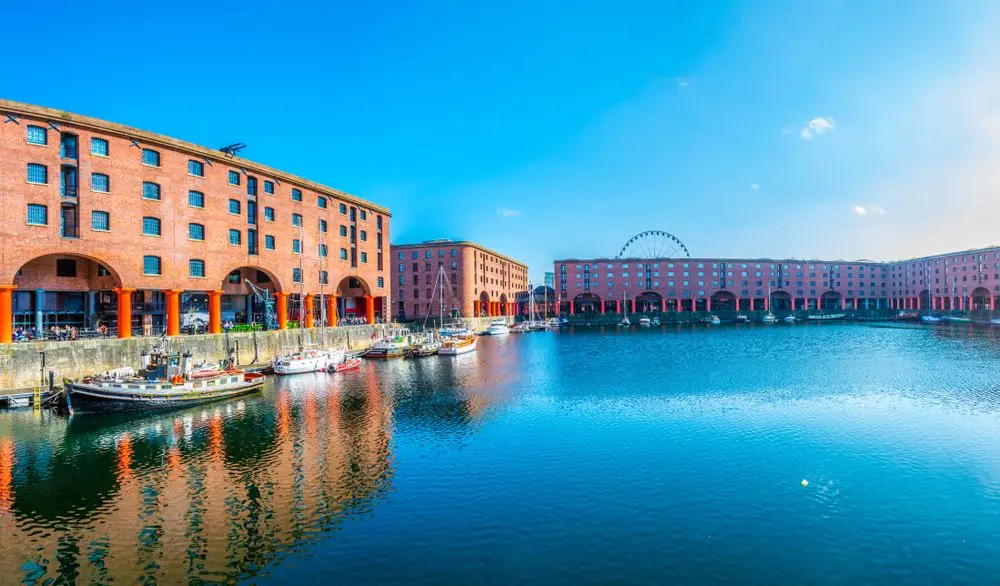
Liverpool Cathedral
Expertly combining modernist and Gothic architecture, Liverpool Cathedral stands proudly in the heart of the city centre. Impressively, this is the largest cathedral in Britain, as well as the fifth largest in the world. If you’re a fan of jaw-dropping designs, the Liverpool Cathedral is a must-see historic site.
London
Houses of Parliament
Lying on the north bank of the River Thames in central London, Westminster, the Houses of Parliament are a sight to behold, having first been built in the early 11th century. A UNESCO World Heritage Site, this palace originally served as the residence for the Kings of England, before later becoming the epicentre of political debate in the UK.
There’s a range of tours which allow you to see inside this world-famous building, including the inner workings of both the House of Commons and the House of Lords. Visitors are even able to watch debates take place - free of charge!
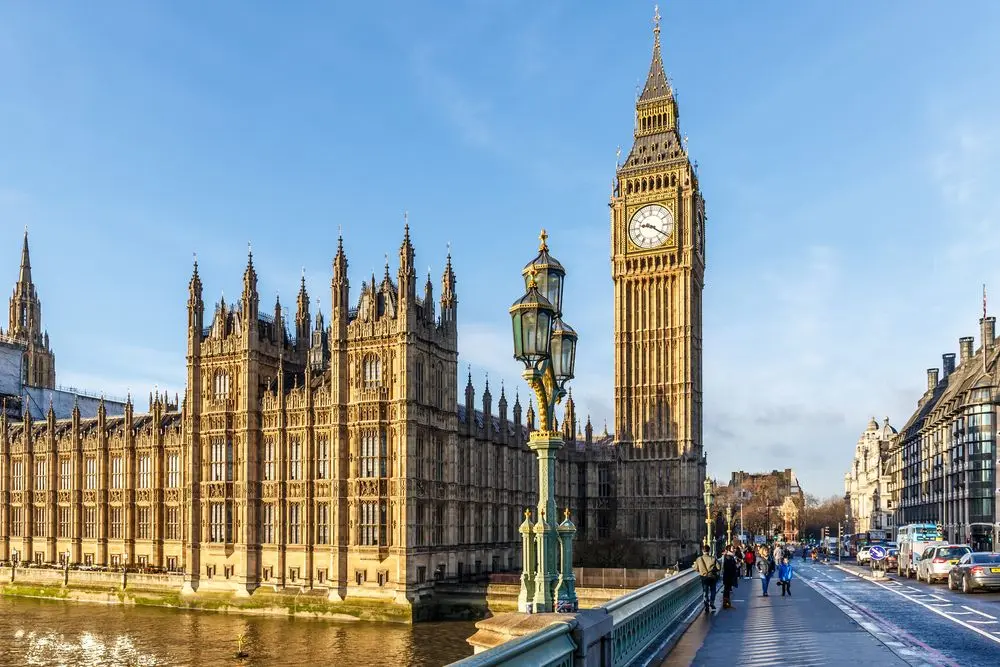
Churchill War Rooms
Thought of as one of the must-see attractions in London, the Churchill War Rooms served as the nerve centre for the British government during the Second World War. From here, Churchill himself worked with his cabinet to play their part in the allied victory.
When in this underground location, you really get a sense of the tension that would have been felt by all. Regular tours are available, with these taking you around the War Cabinet Room, the Map Room and more.
Westminster Abbey
A World Heritage site with over 1,000 years of history, Westminster Abbey is one of Britain’s most important historical places - particularly where royal history is concerned.
Since 1066, this church has served as the location for the coronations of 39 English and British monarchs, as well as at least 16 royal weddings. In September 2022, the state funeral of Elizabeth II took place at Westminster Abbey.
Westminster Abbey is open for services and tours throughout the week. On one of these tours, you can explore this fascinating and beautiful church which serves as the resting place for more than 3,000 historically significant Britons.
Highgate Cemetery
Considered one of the most famous cemeteries in the world, Highgate Cemetery is located in the borough of Camden, Greater London.
This cemetery is famous because of the abundance of equally famous people buried there. There are at least 850 notable people buried in Highgate Cemetery, and perhaps the most well-known of all is German philosopher and father of Communism Karl Marx. Other famous residents include novelist George Eliot and painter Henry Moore.
The grounds are also lovely to explore, thanks to an abundance of mature trees, wildflowers and plenty of wildlife.
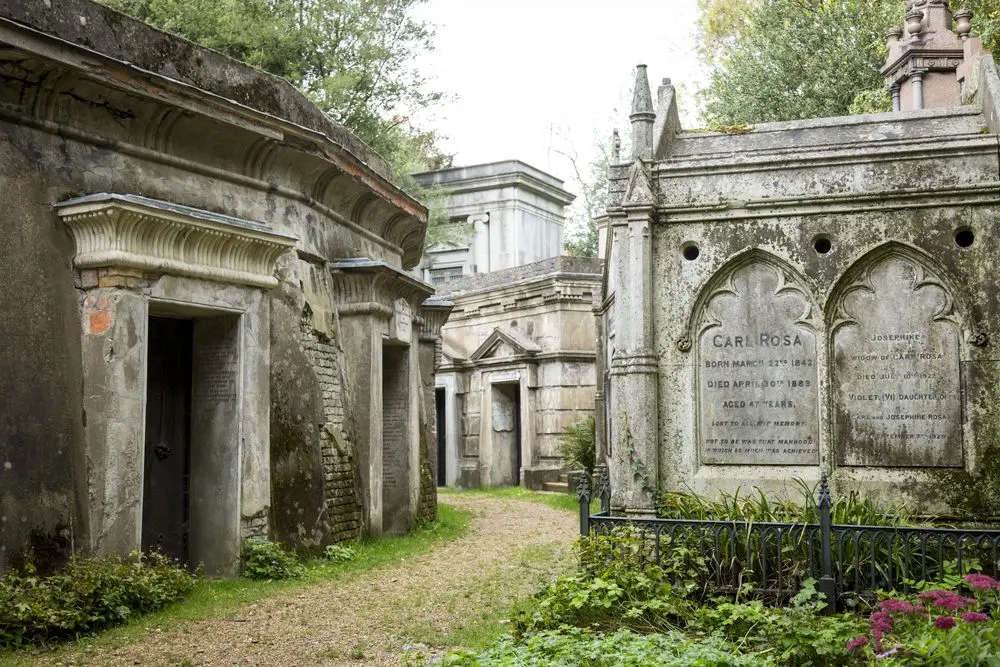
Manchester
Chetham’s Library
Did you know that Manchester contains the oldest public library in the English-speaking world? Chetham’s Library has remained in the city centre since first opening in 1421. This library originally served as a college of priests and later a prison during the Civil War, before being officially converted into a public library in 1653.
Victoria Baths
Upon opening in 1906, the historically significant Victoria Baths were described as “the most splendid municipal bathing institution in the country” and “a water palace of which every citizen of Manchester can be proud”. This historical site is popular with people across North West England.
Newcastle-upon-Tyne
Hadrian’s Wall
Stretching 73 miles from coast to coast, Hadrian’s Wall was originally built by Roman Emperor Hadrian to defend the northwest section of the Roman Empire.
Today, you can explore history as long as the wall itself, as well as the often stunning landscapes that accompany it on either side. Forts can be found across the north of England, including near the city of Carlisle and the town of Hexham.
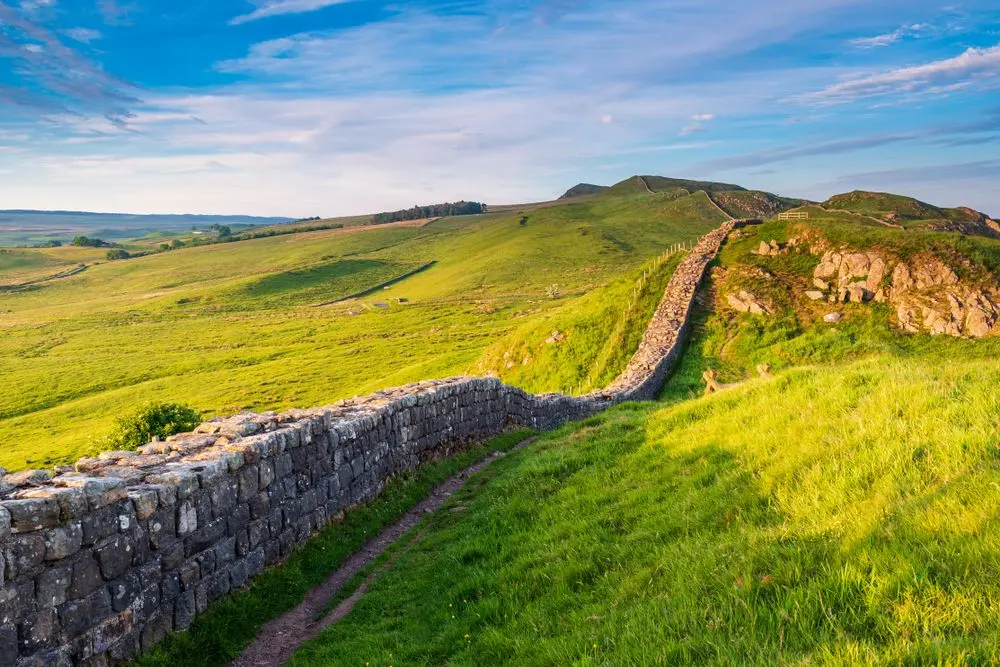
Newcastle Castle
The aptly named Newcastle Castle is a great reminder of Northern England’s often stormy past and military history. This castle is actually where the story of the city began - and where its name comes from.
At this castle, armies would regularly gather and criminals would be imprisoned. You can learn about this castle’s history, as well as explore ancient passageways, chambers and seemingly endless hidden stories.
Nottingham
Ye Olde Trip To Jerusalem
Numerous traditional English pubs clamour for the title of the country’s oldest. Of these, we’d have to say that Ye Olde Trip to Jerusalem has the strongest claim. Sources and dates vary, but many say that the site of this iconic Nottingham pub dates back to 1189.
The name is steeped in history as well, with Richard the Lionheart and his men having been said to gather at the tavern before heading to Jerusalem for the Crusades.

Wollaton Hall
A magnificent work of Elizabethan architecture, Wollaton Hall is known for its impressive scale, as well as housing the UK’s largest dedicated natural history museum.
There’s plenty to do for the whole family all year round when visiting Wollaton Hall. Not only can you explore this noble palace, but you can also check out the Grade II-listed walled garden and Nottingham Industrial Museum - all of which are set amongst 500 acres of idyllic parkland near the town of Beeston.
Sheffield
Warsend Cemetery
The Warsend Cemetery is the final resting place of almost 30,000 people from Sheffield and the surrounding areas. This cemetery is housed within the Warsend Cemetery Heritage Park. Here, you’ll also find the idyllic River Don gently flowing at the base of the hill, along with a wide variety of flowers that have grown and blossomed over the last 150 years.
Abbeydale Industrial Hamlet
The Abbeydale Industrial Hamlet is the perfect place to explore the steel industry that had such an impact on Sheffield’s history, and South Yorkshire as a whole. At this historical site, you can immerse yourself in steelworks from as far back as the 1700s.
Southampton
Bargate
This impressive Grade-I listed mediaeval gatehouse in the centre of Southampton was built around 1180 and originally served as the main gateway into the city. Today, Bargate is regularly praised as the most beautiful and complex gateway anywhere in England.
Over the years, Bargate has seen its fair share of history. The structure was used as a prison during the 15th century, and then later as a guildhall and the site of a popular market.
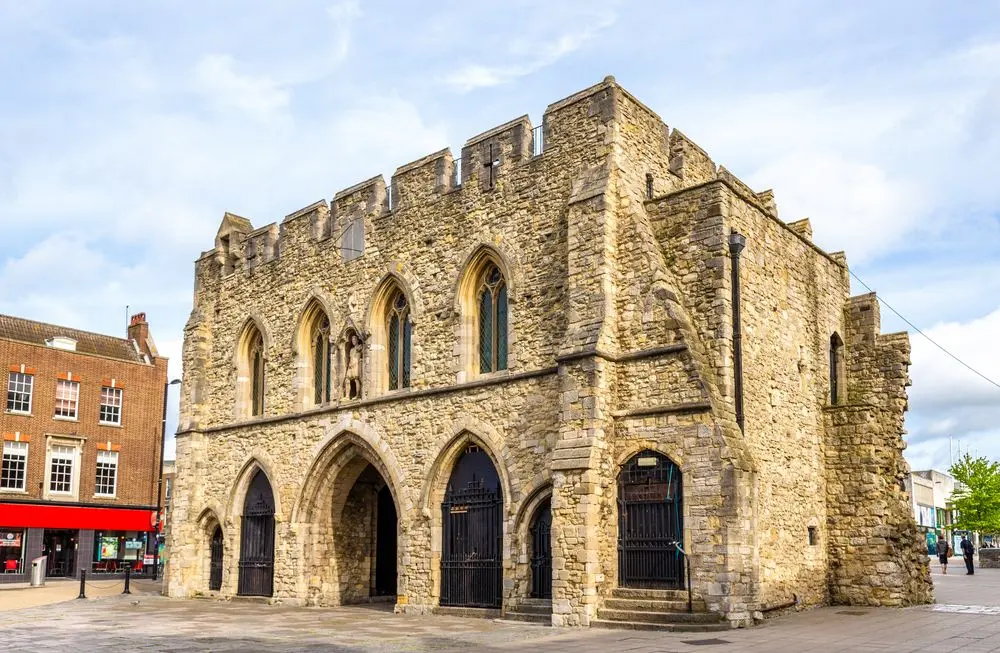
Tudor House
Many people consider Tudor House to be Southampton’s most important historic building. Located in the heart of the city’s Old Town, this timber-framed building contains over 800 years of captivating history.
Also Grade-I listed, Tudor House is the perfect place to learn about its residents over the years, along with the wider history of Southampton.
Meanwhile, the current garden recreates that of a Tudor knot garden, with the plants resembling those which would have been found during the Tudor period.
Swansea
Hafod Morfa Copperworks
The Hafod Morfa Copperworks in Swansea was formerly one of the most important sites of the Industrial Revolution. During the 19th and 20th centuries, this site was covered in an intricate maze of buildings and slag heaps which were created as a by-product of the copper smelting operation that took place here.
Though work no longer takes place, much of these copperworks have since been restored, including the Musgrave Engine House and the Vivian Engine House. Today, no less than 15 significantly important structures remain on the site.
Swansea Castle
While very little remains of Swansea Castle, the surviving building and ruins still serve as a reminder of the imposing fortress which once stood there. A castle has stood in some form at this site since at least the early 12th century, and a Grade-I heritage listing was granted in 1952.
The castle is occasionally opened to the public, such as in 2012 to coincide with St David’s Day. A project has been launched to try and open up the castle to visitors on a more permanent basis.
We’re on a mission to support individuals and their loved ones throughout each stage of their later living journey. For more information, check out everything Lottie has to offer.


